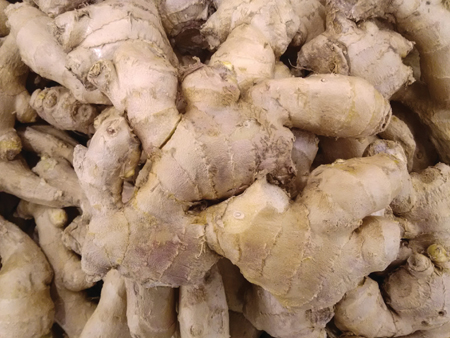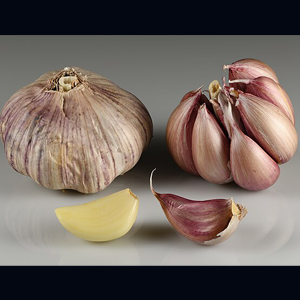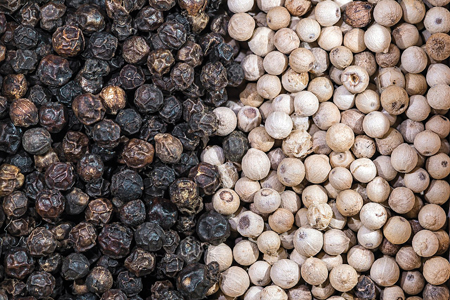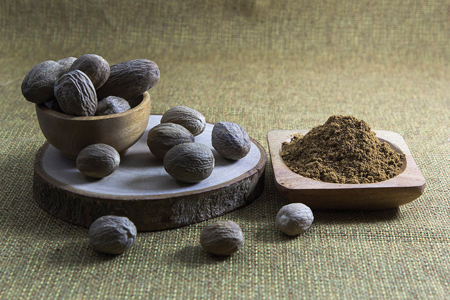Health: Maintaining Agni during Winter

Here is a quick list of herbs and spices that help counter the cold weather and boost immunity.
Centuries before today’s holistic health practitioners caught on to the valuable mantra, “Food is Medicine,” it was an integral part of Ayurveda. Its emphasis on seasonal foods, herbs, spices, and drinks can hardly be overstated.
Ayurveda places great importance on maintaining agni in the body during winter. Agni means fire in Sanskrit. In Ayurveda, the word refers to the digestive or the metabolic fire in the body. Agni digests absorbs and assimilates food for the maintenance of life. Imbalanced and unhealthy agni can increase ama (a toxic substance formed in the body due to poor digestion and metabolism) and lead to imbalances and diseases.
Agni is present in every cell of the body and is considered the cornerstone of health and well-being. A poor diet, an unsupportive lifestyle, and unresolved emotions can easily hinder it.. In this way, it is the gatekeeper of life. In fact, according to Ayurveda, when the agni is extinguished, death soon follows.
If you notice, our appetite gets stronger in winter. Strong agni equals healthy digestion, which leads to a strong immune system. By adding herbs, detoxifying foods, and digestives to our diet, we can further boost the agni during winter.
In India, people drink garam chai with heating spices (ginger, cinnamon, black pepper, cloves, etc.) during winter. For meat eaters, garlic, cloves, and nutmeg are used more frequently in cooking. These spices and herbs clear out natural-occurring toxins, warm up the body, strengthen the agni, enhance immunity, add flavor to foods, and help the entire system function at its best.
 Ginger and garlic: I love to use them in my winter cooking. Garlic and ginger are especially good for strengthening agni. A simple dal tadka with chopped garlic or aloo gobhi with grated fresh ginger are great options. Both garlic and ginger are
Ginger and garlic: I love to use them in my winter cooking. Garlic and ginger are especially good for strengthening agni. A simple dal tadka with chopped garlic or aloo gobhi with grated fresh ginger are great options. Both garlic and ginger are beneficial for heart health. They help lower kapha imbalances in the body—be it mucus accumulation or lymph congestion. To fight high cholesterol and obesity, eat one clove of garlic, chopped, with half-a-teaspoon of grated ginger and half-a-teaspoon of lime juice before meals.
beneficial for heart health. They help lower kapha imbalances in the body—be it mucus accumulation or lymph congestion. To fight high cholesterol and obesity, eat one clove of garlic, chopped, with half-a-teaspoon of grated ginger and half-a-teaspoon of lime juice before meals.
Fresh ginger is calming and soothing for excess vata. Dry ginger powder is energetically hotter, making it a great choice for balancing kapha. Make ginger tea with warm water and fresh ginger root. Dip two or three thin slices of ginger in a little salt and lime juice and have them before a main meal to stoke agni.
Many sects and communities in India shun garlic because of its strong aroma and tamasic qualities. But Ayurveda recommends garlic as a rasayana (rejuvenator). It supports the longevity of life. It is also a good home remedy for fever—chop a clove of garlic, mix in a little ghee, and take each morning until the fever subsides. To help with earache, make garlic oil by boiling a quarter clove of garlic in one teaspoon of sesame oil and then straining. Once it cools, put three drops in the ear at bedtime.
 Black pepper: This was my father’s favorite spice to use in whatever he cooked. On cold nights, his chicken stew with veggies was medicinal. Black pepper has a hot and pungent taste and supports the circulatory and respiratory system. Add a pinch of black pepper to a teaspoon of ghee to soothe a hoarse, tired voice. You can also add a few whole black peppercorns to pilaf, soups, vegetables, or any kind of sauce.
Black pepper: This was my father’s favorite spice to use in whatever he cooked. On cold nights, his chicken stew with veggies was medicinal. Black pepper has a hot and pungent taste and supports the circulatory and respiratory system. Add a pinch of black pepper to a teaspoon of ghee to soothe a hoarse, tired voice. You can also add a few whole black peppercorns to pilaf, soups, vegetables, or any kind of sauce.
Cinnamon: If you notice, fall and winter have an aroma of cinnamon (slightly sweet, bitter, and pungent) in the air (including all the baked goods). Cinnamon pacifies both vata and kapha dosha, stokes the digestive fire, promotes healthy circulation, and helps clear out the airways. Cinnamon also helps keep the blood sugar levels in check.
 While I wouldn’t recommend getting your cinnamon intake through pastries, milkshakes, or rice pudding, cinnamon in your tea can lower blood sugar and aid metabolism. You can even add a pinch of cinnamon powder to soups and veggies or oatmeal. You can cook rice and add a small piece of cinnamon stick to it for aroma. For people with strong pitta, use only a small quantity. To strengthen teeth, chew on a small piece of cinnamon.
While I wouldn’t recommend getting your cinnamon intake through pastries, milkshakes, or rice pudding, cinnamon in your tea can lower blood sugar and aid metabolism. You can even add a pinch of cinnamon powder to soups and veggies or oatmeal. You can cook rice and add a small piece of cinnamon stick to it for aroma. For people with strong pitta, use only a small quantity. To strengthen teeth, chew on a small piece of cinnamon.
Cinnamon is also used in traditional Ayurvedic preparations like Sitopaladi. I recommended it to my mother-in-law when she had a grueling cough and chest congestion, and Sitopaladi worked like magic. Cough, cold, congestion: Mix half-a-teaspoon of cinnamon in one teaspoon of honey. Have this two or three times daily.
 Cloves: Cloves have a strong aroma and fiery flavor. Cloves have been a part of Chinese and Indian traditional medicine systems
Cloves: Cloves have a strong aroma and fiery flavor. Cloves have been a part of Chinese and Indian traditional medicine systems
for ages. The famous five-spice powder used for meats and marinades has clove in it. The popular garam masala powder in Indian cooking also uses clove as one of the ingredients. Apart from masala chai, clove is used in mulled wines, breads, biryani, and other culinary delights.
As an Indian kid, tooth issues meant putting a whole clove under the pain area even before an appointment with the dentist could be arranged. They not only promote comfort for the teeth and gums, but they also help relieve gas. Because of its anti-inflammatory properties, applying clove oil to joints with pain can help ease the discomfort. Cloves also help reduce menstrual cramps, relieve nausea during pregnancy, protect the liver, and aid in healthy weight loss. Add a pinch of ground cloves to your morning oatmeal along with cooked, spiced fruits.
 Nutmeg: There are many culinary uses of nutmeg (It has a warm and nutty flavor that can be added to savory as well as sweet dishes). But this is my favorite spice to calm the nervous system and get a good night’s sleep as nutmeg works as a sedative. Nutmeg is believed to have expectorant properties, which can help alleviate respiratory conditions such as coughs, colds, and asthma.
Nutmeg: There are many culinary uses of nutmeg (It has a warm and nutty flavor that can be added to savory as well as sweet dishes). But this is my favorite spice to calm the nervous system and get a good night’s sleep as nutmeg works as a sedative. Nutmeg is believed to have expectorant properties, which can help alleviate respiratory conditions such as coughs, colds, and asthma.
It’s also used in Ayurvedic medicine to improve focus, digestion, and clarity as well as for the removal of ama. That said, excessive use of nutmeg can have harmful effects, including but not limited to nausea, vomiting, and hallucinations. Make a nutmeg paste and rub it on the forehead or joints to help support comfort in these areas.
While these spices and herbs are therapeutic, always consult with an Ayurvedic practitioner before you start to use them as medicine. Plant medicine can be potent and has contraindications.
Sweta Vikram, an Ayurveda-based life and wellness coach and a graduate of Columbia University, helps people thrive on their own terms.
Disclaimer: The content is purely informative and educational in nature and should not be construed as medical advice. The information is not intended for use in the diagnosis, treatment, cure, or prevention of any disease. Please use the content only in consultation with an appropriate certified medical or healthcare professional.
Enjoyed reading Khabar magazine? Subscribe to Khabar and get a full digital copy of this Indian-American community magazine.
blog comments powered by Disqus










